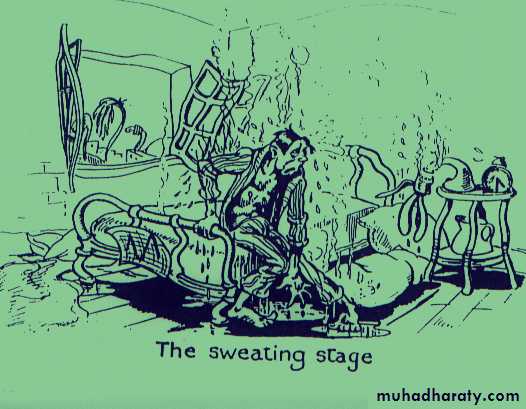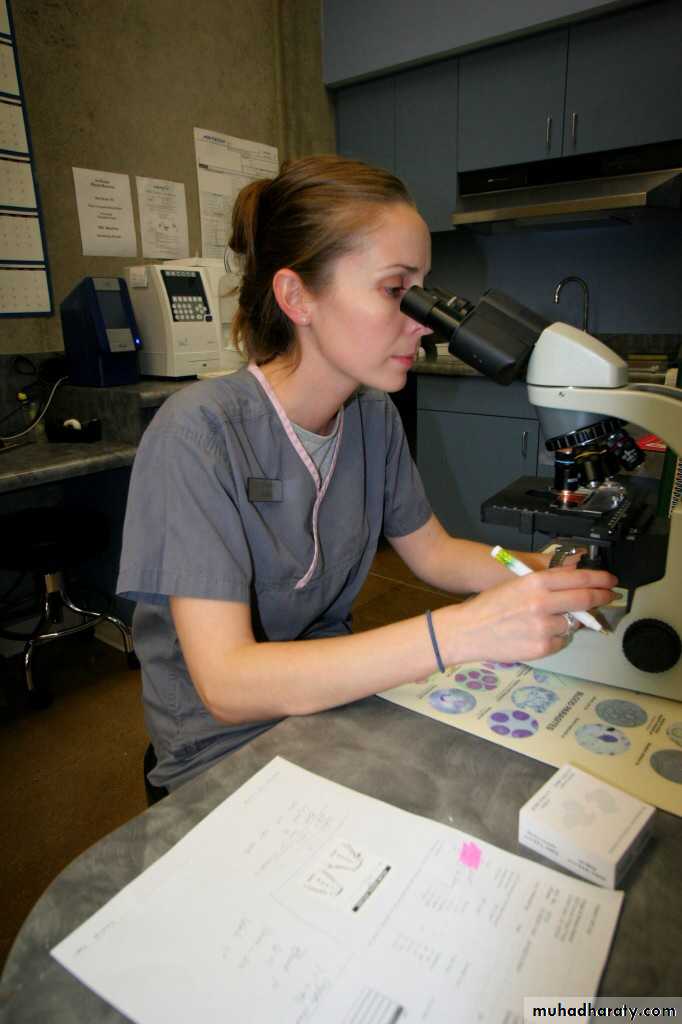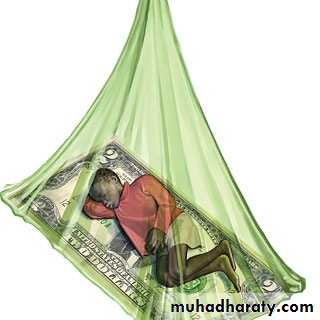MALARIA
Dr. Amal KH. KHClass: Sporozoa
Class One : Sporozoa (Coccidia)
order : Haemosporidia : include blood speciesPlasmodium spp.
Babesia sp.
order : Eucoccidia : include intestinal and tissue species
Toxoplasma gondii (tissue species)
Isospora belli
Cyclospora sp.
Cryptosporidium parvum
Sarcocystis sp.
Microsporidia sp.
Plasmodium spp.
MalariaMorphology
The life cycle of malaria is complex
Vertebrate host - man (intermediate host),
Invertebrate host –mosquito of genus Anopheles (definitive host)
The life cycle passes in four stages:
Three in man:-
- Pre (exo )- erythrocytic schizogony.Erythrocytic schizogony.
Gametogony.
One in mosquito – Sporogony.
Life cycle :
Pre- erythrocytic schizogony
MALARIA
There are certain people, who are resistant to malaria infection, including those with:
Duffy antigen blood group negative (esp. for vivax).Sickle cell traits.
Thalassemia.
Glucose-6-phosphate-dehydrogenase deficiency.
Malaria
It generally begins in the early afternoon and comprises of 3 stages;
cold stage :
hot stage :
sweating stage.:.
Febrile paroxysm (periodic fever):
Malaria
Cold stage,15-60 min, the patient experiences intense cold and shiveringMalaria
Hot stage lasting for 2-6 hours, when the patient feels intense hot. Patient develops high fever (40-41.6 C), severe headache, nausea, and vomiting.
Malaria
Sweating stage, fever ends by a crisis of profuse sweating.Malaria
The periodicity of the attack varies with the species of the infecting parasite.In P. vivax is 48 hrs (benign tertian)
In P. ovale is 48 hrs (ovale tertian)
In P. malariae 72 hrs (quatrain).
In P. falciparum IS typical 48 Hrs malignant tertian.
Malaria
Anaemia after few paroxysms, anemia of microcytic or normocytic hypochromic type develops as a result of:Mechanical destruction of parasitized RBCs.
Reduced erythropoiesis in the bone marrow.
Lysis and phagocytosis of uninfected RBCs.
In a small number of patients with malignant tertian malaria there is autoimmune destruction of RBCs.
Consumption of more than 70% of haemoglobin in RBCs by the parasite.
Failure of the liver to convert liberated iron.
Malaria
Splenomegaly: After few paroxysms, spleen gets enlarged and becomes palpable. Splenomegaly is due to massive proliferation of macrophages which phagocytize both parasitized and non-parasitized RBCs.Jaundice can also occur due to rupture of RBCs.
Malaria
Malignant malaria
Sever malaria (malignant ) is caused by P. falciparum may be fatal , hence it is called pernicious malaria :Cerebral Malaria :
Blackwater fever:
Hypotension :5.Hypoglycemia :
Bleeding from gum, nose and gastrointestinal tract .
Renal failure :
Pregnant women have an increased risk of abortion, stillbirth, premature delivery and of low birth weight of their infants.
Thank you
Dr. Amal KH.KH.PhD Medical Parasitology























